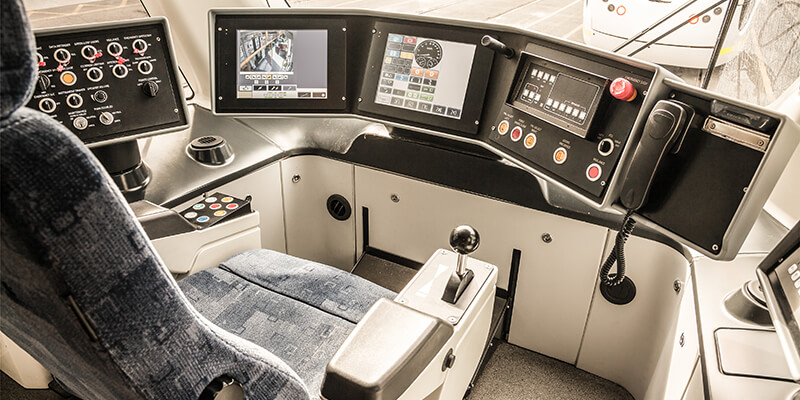Reliable Storage for Event Recording
Reliable real-time data storage is required in many industries. One particularly demanding example is event recorders (commonly known as “black boxes”) in transportation systems, such as the airplane flight-data recorder and train event recorder. These have very strict requirements for rugged and reliable computing and storage.
Flash memory is particularly suitable for these applications because it is non-volatile and, unlike hard disk drives (HDDs), not sensitive to mechanical shock or magnetic fields.
Getting the best results from flash memory, and ensuring reliable data storage, depends on the quality of the flash controller used.
What are the transport industry requirements?
For safety-critical applications, such as the event recorder or Juridical Recording Unit (JRU) used in trains, robust and reliable storage is particularly important. The data that is recorded can include vehicle speed, braking, audio and video signals, and information provided to the driver.
The data is primarily intended for the investigation of accidents and other incidents. This is essential for ensuring passenger safety. However, the data can also be used for monitoring the system to reduce maintenance downtime and improve operational efficiency.
To provide reliable data gathering and storage, event recorders need to be resistant to physical damage, interference from magnetic fields, water and other environmental hazards. There are several standards for reliability and robustness that these devices need to meet.
The event recorder has to record data continuously while the train is running. This must not be interrupted by the flash controller performing internal management functions such as garbage collection. It is also essential for the event recorder to reliably save data from the final moments of an accident, even if power is lost.
The role of the flash controller
Choosing the right flash controller is critical when designing a reliable storage system. The Hyperstone FlashXE® (eXtended Endurance) ecosystem ensures maximum reliability for NAND flash-based storage systems. It achieves this with a suite of features that includes characterization, calibration, data refresh mechanisms and advanced error avoidance, correction and recovery.
The process starts before the system is even built. Hyperstone uses a rigorous qualification process to determine the characteristics of each type of flash memory that the controller can be used with. This is done by extensive lifecycle testing of the flash memory. This provides data about how program and erase cycles, read disturb, temperature and data retention affect the error rates over time. This data is used to parameterize the error detection and correction mechanisms in order to maximize the reliability and lifetime of the memory.
This process does not just consider the characteristics of the flash memory, it also takes into account the requirements of application use case. For example, in the case of black boxes, the controller firmware can be optimized to support continuous writes to memory.
During operation, the controller constantly monitors the performance of the flash memory and uses the characterization data to minimize the chance of errors. Errors are detected by carefully monitoring the quality of the data and comparing the actual value to the ideal value.
Hyperstone flash controllers also have several mechanisms to provide advanced protection against unexpected power loss. For example, the controller monitors the supply voltages and if they fall below a critical threshold, all pending data is written to flash. This is particularly important for black-box applications where data needs to be protected, even under conditions of extreme stress.
Case studies
One major railway customer originally approached us after doing a survey of all the CFast flash cards available on the market. Only one of the products passed all their tests. They opened it up, found that it used a Hyperstone controller and contacted us about developing their product. They have since gone on to design their train event recorders using Hyperstone flash controllers and remain a satisfied customer.
Another company, TERZ Industrial Electronics, also chose a Hyperstone controller. They have integrated our U8 USB controller into their KALIBER-XS flash drive. This is housed in a robust metal case with an industrial M12 connector. This provides protection from mechanical shock and water making it ideally suited for transport applications.
The use of the Hyperstone controller enables the flash drive to provide maximum reliability and lifetime, with an operating temperature range of -40 to 85°C.
Conclusions
Using Hyperstone NAND flash memory controllers, with the FlashXE® ecosystem, makes it easy to build robust storage for transport and industrial applications.
Don’t let your next project be haunted by the threat of read errors or data loss. Make sure you use a Hyperstone flash controller.

